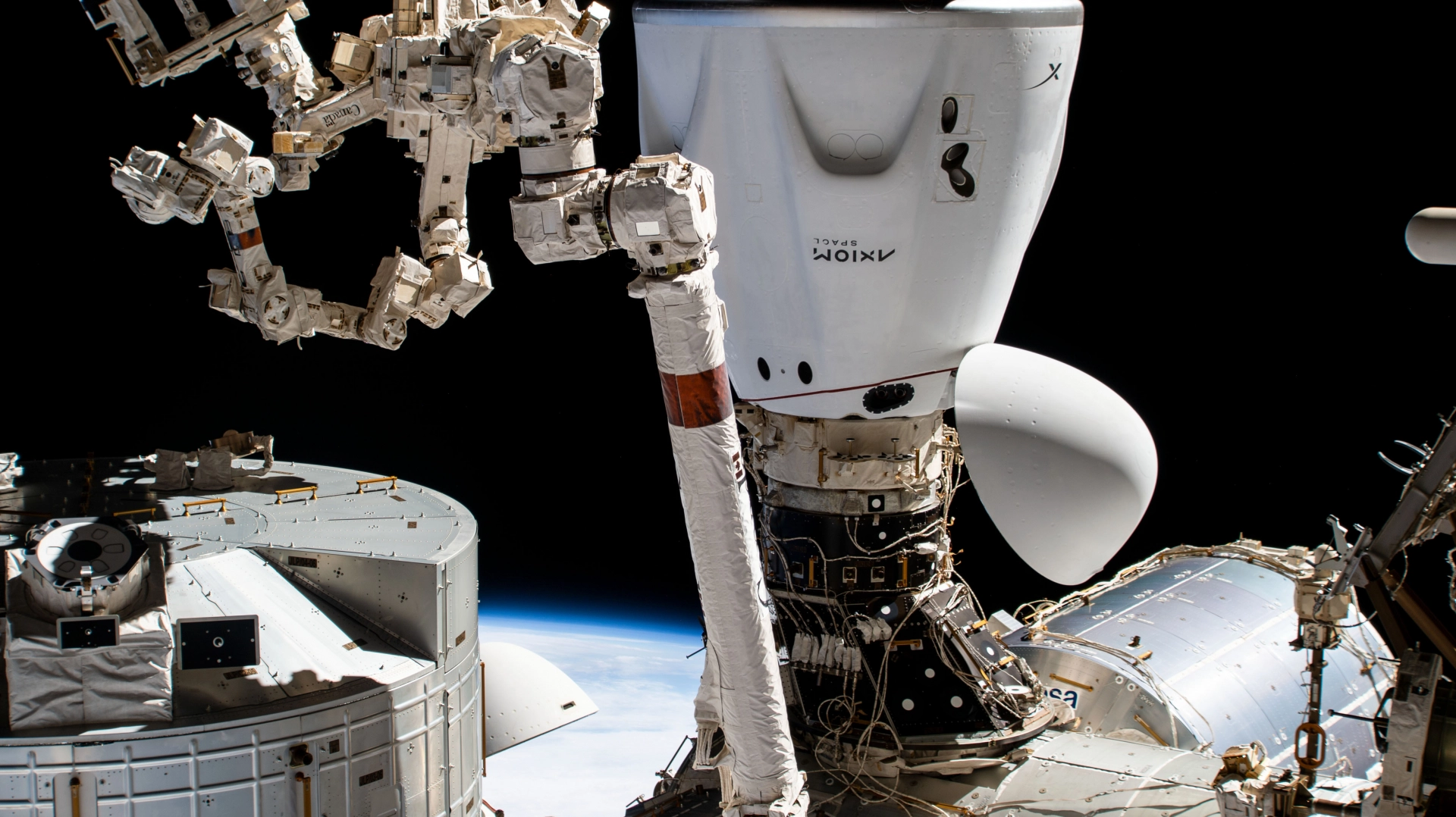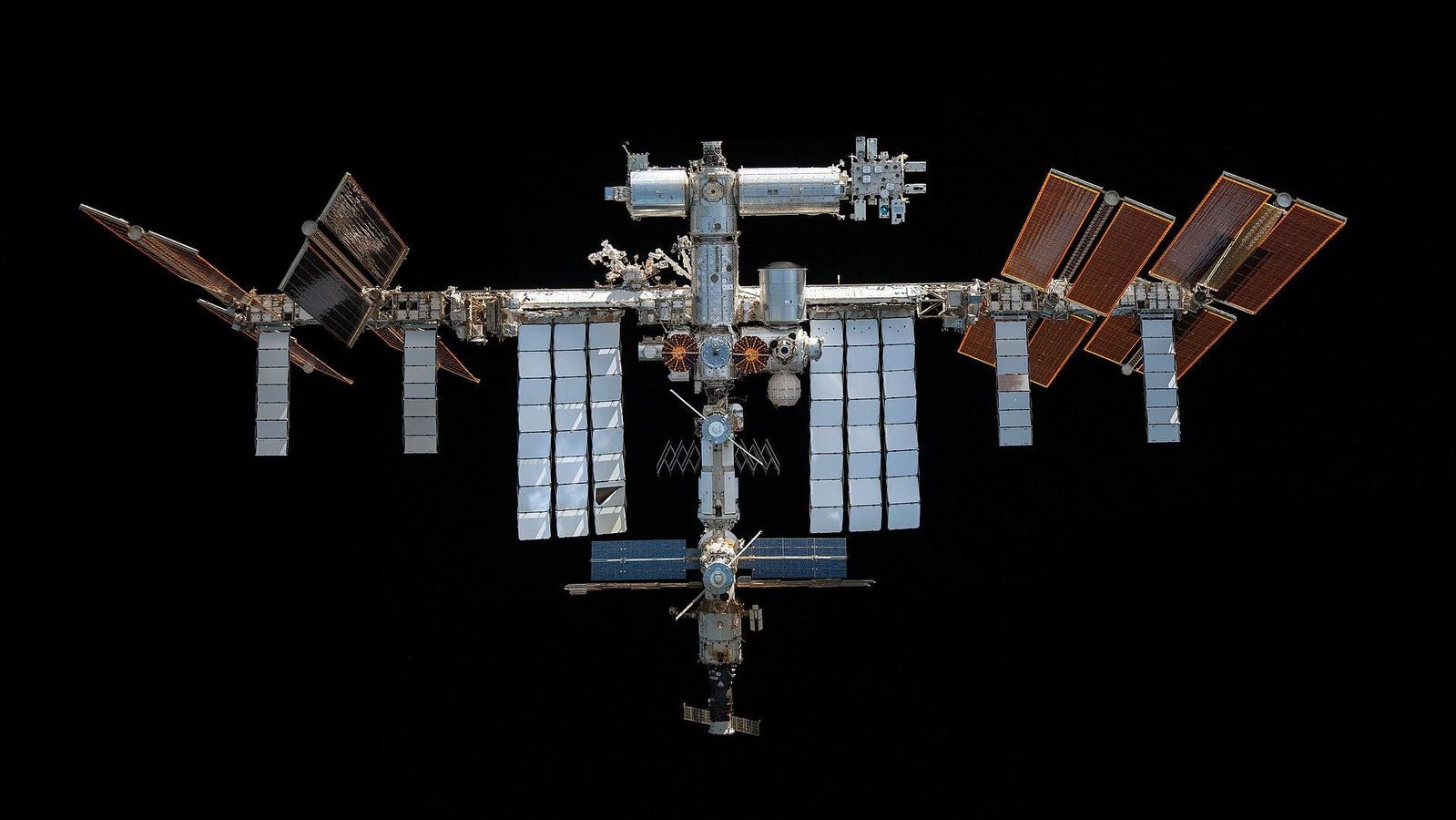Science
James Webb Space Telescope delivers stunning views of PHANGS galaxies – See in 4K

Science
NASA Selects SpaceX to Develop ISS Deorbit Vehicle – SpaceWatch.Global

Ibadan, 28 June 2024. – Towards the safe and responsible deorbit of the International Space Station (ISS) after the end of its operational life in 2030, NASA has selected SpaceX to develop and deliver the U.S. Deorbit Vehicle that will provide the capability to deorbit the space station and ensure avoidance of risk to populated areas. The single-award contract has a total potential value of $843 million, while the launch service for the Vehicle will be a future procurement.
Since 1998, five space agencies, CSA (Canadian Space Agency), ESA (European Space Agency), JAXA (Japan Aerospace Exploration Agency), NASA (National Aeronautics and Space Administration), and State Space Corporation Roscosmos, have operated the ISS with each agency responsible for managing and controlling the hardware it provides. As a result, the safe deorbit of the Space Station is the responsibility of all five space agencies.
While SpaceX will develop the deorbit spacecraft, NASA will take ownership after development and operate it throughout its mission. Along with the space station, NASA expects it to destructively break up as part of the re-entry process. The United States, Japan, Canada, and the participating countries of ESA have committed to operating the station through 2030. Likewise, Russia has committed to continued station operations through at least 2028
Speaking on the selection, Ken Bowersox, associate administrator for Space Operations Mission Directorate at NASA, said, “Selecting a U.S. Deorbit Vehicle for the ISS will help NASA and its international partners ensure a safe and responsible transition in low Earth orbit at the end of station operations.” Bowersox also added, “The orbital laboratory remains a blueprint for science, exploration, and partnerships in space for the benefit of all. This decision supports NASA’s plans for future commercial destinations and allows for the continued use of space near Earth.”
Science
China’s lunar probe brought back 1.9kg of rock samples, space agency says – South China Morning Post

“According to preliminary calculations, the Chang’e-6 mission collected 1,935.3 grams [4.26lb] of lunar samples,” the China National Space Administration (CNSA) said in a statement.
The samples were collected from the far side of the moon – the first time this has been done – at an impact crater known as the South Pole-Aitken Basin, which always faces away from Earth.
“After the samples are safely transported to the lunar sample laboratory, the researchers of the ground application system will carry out the storage and processing of the lunar samples as planned, and start scientific research,” the CNSA said.
“Our container is designed to be only so large, so we can’t add any more,” Hu said.
The Chang’e-5 spacecraft brought back about 1.73kg (3.8lb) of lunar soil from the near side of the moon when it returned from its mission in 2020.
The space agency said the samples had “unique scientific significance” and were an “important asset for all mankind”. Studying them could improve “understanding of the evolution of the moon, accelerate mankind’s peaceful exploration and utilisation of lunar resources”.
Li Chunlai, deputy chief designer of the mission, told reporters on Thursday that the samples “may have very different mineral chemical compositions” from those collected from the moon’s near side.
“In other words, we only know about half of the moon from the samples collected in the past,” he said.
That includes samples collected by the Chang’e-5 mission. Li said more than 100 “high-quality” papers had already been published in journals like Nature and Science in less than four years of researching those samples.
One major finding was that volcanic activity on the moon dates back to around 2 billion years ago – extending previous estimates from the Apollo missions by nearly 1 billion years.
Liu Yunfeng, head of international cooperation at the CNSA, said China had launched an international review of research on the Chang’e-5 samples and would make the results available in the future.
Science
NASA Gives SpaceX $843 Million To Junk The International Space Station

NASA will pay SpaceX $843 million to dispose of the International Space Station.
Elon Musk’s company was awarded the contract to safely deorbit the International Space Station within the next decade.
In orbit of Earth since 1998, the ISS is due to come to the end of its operational life in or around 2030. Instead of leaving it to partially burn up in Earth’s atmosphere and crash unpredictably on the surface, NASA wants a safe, controlled reentry and splash down for the structure.
Too Big To Burn
SpaceX will develop and deliver a spacecraft called the “U.S. Deorbit Vehicle” to bring the ISS back to Earth without risk to populated areas, according to the contract terms.
The 900,000-pound (400,000 kg) ISS is one of many larger structures too massive to burn up during reentry into the Earth’s atmosphere. The USDV is expected to take several years to develop and test.
As it stands, NASA, Canada’s CSA, Japan’s JAXA and the European Space Agency have committed to operating the ISS through 2030, while Russia’s Roscosmos will use it until at least 2028.
Spacecraft Cemetery
The ISS will ultimately be guided to an area of the Pacific Ocean known as the “spacecraft cemetery.” An uninhabited area between New Zealand and South America, the ocean floor here is home to over 263 spacecraft, including many capsules, cargo craft and rockets used to reach the ISS.
“Selecting a U.S. Deorbit Vehicle for the International Space Station will help NASA and its international partners ensure a safe and responsible transition in low Earth orbit at the end of station operations,” said Ken Bowersox, associate administrator for Space Operations Mission Directorate at NASA Headquarters in Washington, D.C. “This decision also supports NASA’s plans for future commercial destinations and allows for the continued use of space near Earth.”
Private Space Stations
The ISS costs NASA about $3.1 billion per year to run. It’s hoped that the removal of the ISS from low-Earth orbit will encourage the private space industry to construct orbiting space stations that both private and space agency astronauts can use on a pay-per-visit basis.
Several private space stations have been previewed in recent years, including Orbital Reef and Axiom Space’s Axion Station. Orbital Reef is the brainchild of Blue Origin and Sierra Space, but it has support from Boeing, Redwire Space, Genesis Engineering Solutions and Arizona State University. It will orbit 310 miles/500 kilometers out and is described as a “mixed-use business park” in space so companies can “establish their own address on orbit.”
Blue Origin will build and launch the modules on its now-in-development New Glenn rocket, Sierra Space will create modules and use its Dream Chaser spaceplane to launch and land crew and Boeing will supply its Starliner spacecraft.
Wishing you clear skies and wide eyes.
Pick up my books Stargazing in 2024, A Stargazing Program For Beginners and When Is The Next Eclipse?

-
Business14 hours ago
WestJet strike likely averted as Ottawa imposes arbitration on airline, mechanics
-
News14 hours ago
News publishers ask CRTC to ensure ‘good faith’ in Google funding
-

 News15 hours ago
News15 hours ago‘Egregious exploitation’: Toronto woman sentenced to 3 years for Inuit identity fraud
-
Health22 hours ago
GSK and Moderna slide on RSV vaccine CDC updates – Proactive Investors USA
-

 News22 hours ago
News22 hours agoHalifax man and ‘trailblazer’ admired for love of wearing high heels has died at 86
-
Art22 hours ago
School officials censored an ‘art activism’ student’s speech about accessibility barriers
-

 Sports14 hours ago
Sports14 hours agoNBA DRAFT: Toronto Raptors select Jonathan Mogbo with the 31st pick
-
Economy14 hours ago
The big economy question at tonight’s debate



